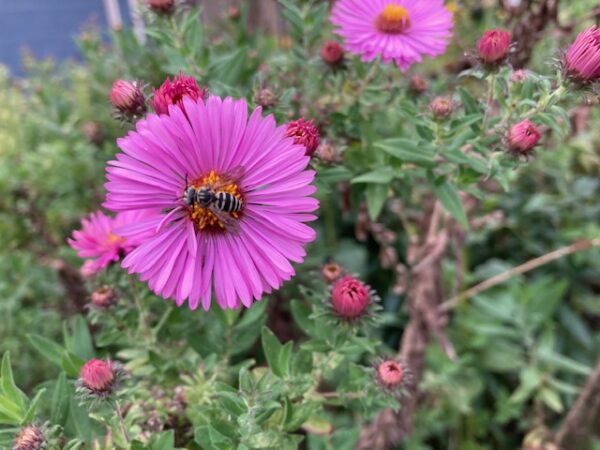
Pollination is the important initial step in plant reproduction. It begins when the male part of a flower (anther) produces pollen, and this pollen is transferred to the female part of a flower (stigma). There are two main categories of pollination: self-pollination, and cross-pollination.
Some flowers have both male and female parts, and these are referred to as “perfect” flowers. Some flowers only have male or female parts, and these are referred to as “imperfect” flowers. A plant that has both sexes of imperfect flowers growing on it is called monoecious. A plant that only has one sex of imperfect flowers growing on it is called dioecious.
With self-pollination a plant is able to reproduce with itself. Most of the plants that self-pollinate have perfect flowers (both male and female parts on the same flower). Less commonly, self pollination can occur in monoecious plants and can still be aided by pollination agents. The plants that self-pollinate make up about 10% of all flowering plants. The much more common method of pollination is cross-pollination. Cross-pollination, however, requires an external pollination agent to occur. This may be obvious but flowers can’t just get up and walk over to each other like animals can. They require a delivery service in order to successfully reproduce. This delivery service is referred to as the pollination agent.
Pollination agents can be living (biotic) or nonliving (abiotic). Flowers have evolved many methods over time to aid in their cross-pollination. By looking at a flower, you can tell a lot about how it may be pollinated. Let’s take a closer look at some of these methods and the pollination agents that flowers use.
Entomophily
Entomophily is biotic pollination by insects. Insects are the most common biotic pollination agent. Bees are the primary example of biotic pollination. Some other examples of entomophily insects are butterflies, flies, moths, beetles, and ants. Most insects are attracted to colorful, fragrant, showy flowers. The pollen of these flowers is typically coarse and sticky and will attach to the bodies of insects. The insects feed on the nectar and pollen of the flowers and in the process, transfer some of the pollen from one flower to the next.
Ornithophily
Ornithophily is biotic pollination by birds. Birds are also attracted to showy and fragrant flowers. Hummingbirds in particular will be attracted to red flowers since red is one of the brightest colors they can see and a sure signal that a high amount of nectar is present.
Zoophily
Zoophily is biotic pollination by vertebrate animals. Besides birds, some other examples of the most common animals that pollinate flowers are bats, rodents, lizards, marsupials, and lemurs. These animals also feed on nectar and facilitate pollination in the process. The flowers that attract animals are typically large and contain large amounts of nectar. Bats in particular are attracted to large white flowers that they can easily see during the night.
Anemophily
Anemophily is abiotic pollination by wind. 98% of abiotic pollination is done by wind. The flowers that are pollinated by wind are often not showy. They may not even look like flowers at all from a distance. They are usually small and green. When pollen forms, it forms in larger amounts to increase the likelihood that it will successfully disperse and pollinate other plants. Since wind-pollinated flowers form huge amounts of pollen, these are the plants that commonly cause allergies in the spring.
Hydrophily
Hydrophily is abiotic pollination by water. This is a much less common form of pollination, but water is an equally important pollination agent for some aquatic plants.



Check out my last blog about the first wildflowers of spring! There is a great example of one flower that has evolved to attract flies as a pollination agent.


Comments
One response to “Pollination Agents: Important Ways Different Flowers Are Pollinated”
[…] If you are interested in learning how flowers transport their pollen to their stigma, check out my blog on the importance of pollination agents. […]